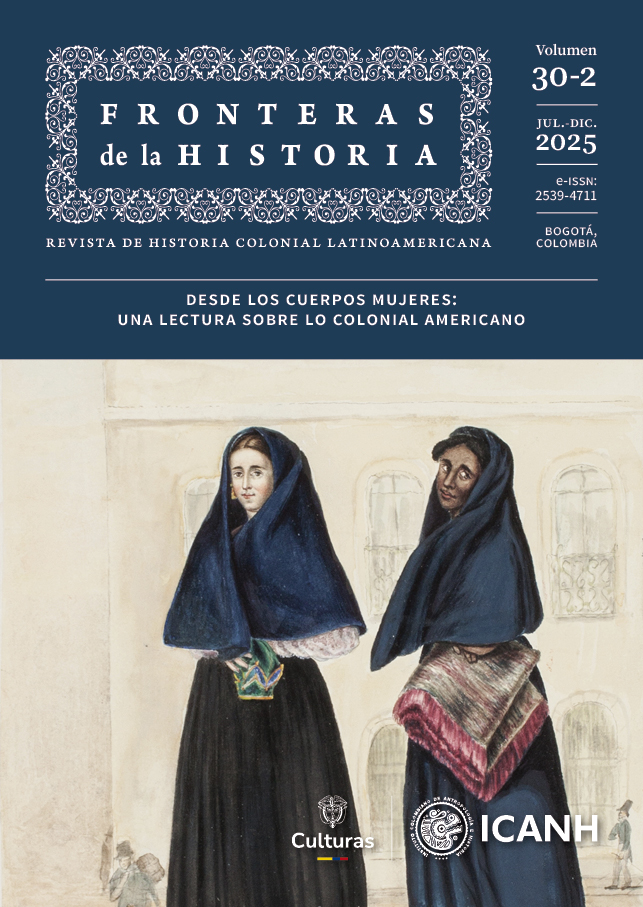La princesa que salvó al capitán: la alegorización del cuerpo de Pocahontas en los grabados de Robert Vaughan (1624) y Matthäus Merian (ca. 1634)
DOI:
https://doi.org/10.22380/20274688.2908Palabras clave:
colonialismo, alegoría, Pocahontas, Virginia, iconografía, cuerposResumen
El artículo analiza, bajo el método iconográfico, el grabado de Robert Vaughan recogido en The Generall Historie of Virginia, New-England, and the Summer Isles, de John Smith, y la representación de Matthäus Merian en el volumen decimotercero de los Grands Voyages, compilación de la familia De Bry. Ambas imágenes muestran a Pocahontas como rescatista del capitán John Smith y están inscritas en la retórica visual de la Edad Moderna sobre la plasmación colonial de los llamados textos de Indias. El trabajo relaciona estas ilustraciones con otros esquemas visuales europeos, con el fin de observar la idealización del cuerpo de Pocahontas que fue utilizada como medio para legitimar y asimilar la dominación inglesa en Virginia.
Citas
Bibliografía
Fuentes primarias
Arber, Edward, ed. Travels and Works of Captain John Smith. John Grant, 1910.
Barbour, Philip L. The Complete Works of Captain John Smith. The University of North Carolina Press, 1986.
Bry, Theodore de. América (1590-1634). Siruela, 1992.
Chamberlain, John. “Letters II, 66”. En The Court and Times of James the First: Illustrated by Authentic and Confidential Letters, editado por Robert Folkestone Williams y Thomas Birch, vol. 2. Londres: Henry Colburn Publisher, 1849.
Deane, Charles. Wingfield’s Discourse of America. Boston: J. Wilson and Son, 1860.
Fenestela, Lucio. Compendio de las Décadas de Tito Livio. Traducido por Pedro de la Vega. Sevilla: Juan Varela de Salamanca, 1520. Repositorio de la Universidad de Valladolid.
Hakluyt, Richard. The Principal Navigations, Voyages, Traffiques, and Discoveries of the English Nation. Londres: George Bishop y Ralph Newberie, 1589.
Hamor, Ralph. A True Discourse of the Present Estate of Virginia, and the Successe of the Affaires There Till the 18 of Iune 1614. Together with a Relation of the Seuerall English Townes and Fortes, the Assured Hopes of That Countrie and the Peace Concluded with the Indians. The Christening of Powhatans Daughter and Her Marriage with an English-Man. Londres: John Beale, 1615.
Rolfe, John. “The Coppie of the Gentle-mans Letters to Sir Thomas Dale, That After Maried Powhatans Daughter, Containing the Reasons Moving Him Thereunto”. En The Old Dominion in the Seventeenth Century: A Documentary History of Virginia, 1606-1700, editado por Warren M. Billings, 270-274. Omohundro Institute of Early American History and Culture, 2007.
Smith, John. The Generall Historie of Virginia, New England, and the Summer Isles. Londres: impreso por I. D. and I. H. for Michael Sparkes, 1624. Biblioteca John Carter Brown, Rhode Island.
Smith, John. The Generall Historie of Virginia, New England, and the Summer Isle. En Arber, Travels, 275-782.
Fuentes secundarias
Barbour, Philip L. The Three Worlds of Captain John Smith. Houghton Mifflin, 1964.
Bhabha, Homi. “Of Mimicry and Man: The Ambivalence of Colonial Discourse”. October 28 (1984): 125-133. https://doi.org/10.2307/778467
Billings, Warren M., ed. The Old Dominion in the Seventeenth Century: A Documentary History of Virginia, 1606-1700. University of North Carolina Press, 1975.
Blanchard, Pascal, Nicolas Bancel, Gilles Boëtsch, Christelle Taraud y Dominic Thomas. Sexe, race & colonies: la domination des corps du XVe siècle à nos jours. La Découverte, 2018.
Boime, Albert. A Social History of Modern Art. Vol. 2, Art in an Age of Counterrevolution, 1815-1848. University of Chicago Press, 2004.
Certeau, Michel de. The Writing of History. Columbia University Press, 1992.
Chastel, André. El gesto en el arte. Siruela, 2004.
Custalow, Linwood (Little Bear) y Angela L. Daniel (Silver Star). The True Story of Pocahontas: The Other Side of History. Fulcrum, 2007.
Díez Jorge, María Elena. “Imágenes de la paz y la mujer: relaciones de género en la iconografía de la paz y de la guerra”. En Luchas de género en la historia a través de la imagen: ponencias y comunicaciones, editado por María Teresa Sauret Guerrero y Amparo Quiles Paz, 89-108. Diputación Provincial de Málaga, 2002.
Elliott, John H. Prólogo a América (1590-1634). En De Bry, América, 7-13.
Fumagalli, María Cristina. Caribbean Perspectives on Modernity: Returning Medusa’s Gaze. University of Virginia Press, 2009.
García Mahíques, Rafael. Iconografía e iconología. Vol. 1, La historia del arte como historia cultural. Encuentro, 2008.
García Mahíques, Rafael. “Imagen conceptual e imagen narrativa”. En Emblemática trascendente: hermenéutica de la imagen, iconología del texto, editado por Rafael Zafra y José Javier Azanza, 65-86. Universidad de Navarra; Sociedad Española de Emblemática, 2011.
Gleach, Frederic W. “Pocahontas: An Exercise in Mythmaking and Marketing”. En New Perspectives on Native North America: Cultures, Histories, and Representations, editado por Sergei A. Kan y Pauline Turner Strong, 433-455. University of Nebraska Press, 2006.
Green, Rayna. “The Pocahontas Perplex: The Image of Indian Women in American Culture”. The Massachusetts Review 16, núm. 4 (1975): 698-714. https://www.jstor.org/stable/25088595
Smith, John. A Map of Virginia: With a Description of the Countrey, the Commodities, People, Government and Religion. En Arber, Travels, 41-46.
Smith, John. A True Relation of such Ocurrences of Noate as ath Happened in Virginia. En Arber, Travels, 5-40.
Strachey, William. The Historie of Travaile into Virginia Britannia. Londres: Hakluyt Society, 1849.
Hallock, Thomas. A Road Course in Early American Literature Travel and Teaching from Atzlán to Amherst. University Alabama Press, 2021.
Hitchcock, H. Wiley. “An Early American Melodrama: The Indian Princess of J. N. Barker and John Bray”. Notes 12, núm. 13 (1955): 375-388. https://doi.org/10.2307/893133
Jager, Rebecca Kay. Malinche, Pocahontas and Sacagawea: Indian Women as Cultural Intermediaries and National Symbols. University of Oklahoma Press, 2015.
Landes, Joan B. Visualizing the Nation: Gender, Representation, and Revolution in Eighteenth-Century France. Cornell University Press, 2002. https://doi.org/10.7591/9781501727535
López-Aguirre, Diego Felipe. “Representar el cuerpo femenino indígena en Indias Occidentalis (1590-1634) de Theodore de Bry”. Tesis de grado, Universidad de los Andes, 2017. https://repositorio.uniandes.edu.co/entities/publication/4f147d22-7eec-43b9-9f9a-3fff3b4dcfe9
Lubin, David M. “Ariadne and the Indians: Vanderlyn’s Neoclassical Princess, Racial Seduction, and the Melodrama of Abandonment”. Smithsonian Studies in American Art 3, núm. 2 (1989): 2-21. https://doi.org/10.1086/smitstudamerart.3.2.3108976
Mataix Azuar, Remedios. “Androcentrismo, eurocentrismo, retórica colonial: amazonas en América”. América sin Nombre, núm. 15 (2010): 118-136. http://dx.doi.org/10.14198/AMESN2010.15.13
McClintock, Anne. Imperial Leather: Race, Gender, and Sexuality in the Colonial Contest. Routledge, 1995.
McLuhan, Marshall. Gutenberg Galaxy: The Making of Typographic Man. University of Toronto Press, 1962.
Mignolo, Walter. “El metatexto historiográfico y la historiografía indiana”. MLN 96, núm. 2 (1981): 358-402. https://doi.org/10.2307/2906354
Montaudon, Yvonne. “Las fuentes literarias de la construcción bernaldiana de doña Marina”. Signos Literarios, 3, núm. 5 (2007): 39-70. https://signosliterarios.izt.uam.mx/index.php/SL/article/view/151
Noguerol, Francisca. “La imagen de la mujer indígena en las crónicas de Indias”. Escritura 19, núms. 37-38 (1994): 21-50. https://gredos.usal.es/handle/10366/136939
Pérez Valiño, Amalia. “María: dos imágenes enfrentadas”. En Autoridad, poder e influencia: mujeres que hacen historia, coordinado por Henar Gallego Franco y María del Carmen García Herrero, 763-775. Icaria, 2017.
Probasco, Nathan J. “American Bodies and Landscapes in Early English Colonisation”. Studies in Travel Writing 22, núm. 1 (2018): 16-38. https://doi.org/10.1080/13645145.2018.1458696
Ramírez Rojas, Fausto. “La cautividad de los hebreos en Babilonia: pintura bíblica y nacionalismo conservador en la academia mexicana a mediados del siglo XIX”. En Arte, historia e identidad en América Latina: visiones comparativas, coordinado por Gustavo Curiel Méndez, Renato González Mello y Juana Gutiérrez Haces, 279-295. Instituto de Investigaciones Estéticas, UNAM, 1994.
Read, David. “Colonialism and Coherence: The Case of Captain John Smith’s ‘Generall Historie of Virginia’”. Modern Philology 91, núm. 4 (1994): 428-448. https://doi.org/10.1086/392189
Rennie, Neil. Pocahontas, Little Wanton: Myth, Life and Afterlife. Quaritch, 2007.
Rodríguez Moya, Inmaculada. “Heroínas suicidas: la mujer fuerte y la muerte como modelo iconográfico en el Barroco”. En Valor discursivo del cuerpo en el Barroco hispánico, coordinado por Rafael García Mahíques y Sergi Doménech García, 423-437. Universitat de València, 2015.
Rojas, Braulio. “La difícil otredad americana: la disputa por las imágenes y el conflicto por los nombres”. Cuyo: Anuario de Filosofía Argentina y Americana 19, núm. 1 (2012): 47-84. https://dialnet.unirioja.es/servlet/articulo?codigo=4674694
Roux, Tiffany, coord. Sexualités, entités & corps colonisés: XVe siècle-XXIe siècle. CNRS, 2019.
Smith, Andrea. “Not an Indian Tradition: The Sexual Colonization of Native Peoples”. Hypatia 18, núm. 2 (2003): 70-85. https://doi.org/10.1353/hyp.2003.0042
Sundquist, Åsebrit. Pocahontas & Co.: The Fictional American Indian Woman in Nineteenth-Century Literature: A Study of Method. Solum, 1987.
Taylor, Alan. American Colonies: The Settling of North America. Penguin, 2001.
Townsend, Camilla. Pocahontas and the Powhatan Dilema. Hill and Wang, 2004.
Trexler, Richard. Sex and Conquest: Gendered Violence, Political Power, and the European Conquest of the Americas. Cornell University Press, 1995.
Warner, Marina. Fantastic Metamorphoses, Other Words: Ways of Telling the Self. Oxford University Press, 2004.
Young, Philip. “The Mother of Us All Pocahontas Reconsidered”. The Kenyon Review 24, núm. 3 (1962): 391-415. https://www.jstor.org/stable/4334240
Publicado
Cómo citar
Número
Sección
Licencia
Derechos de autor 2025 Fronteras de la historia

Esta obra está bajo una licencia internacional Creative Commons Atribución-NoComercial-SinDerivadas 4.0.















